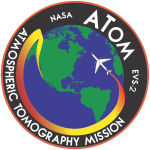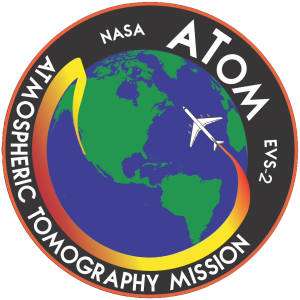ATom
All publicly available merged data sets from the ATom-1 (Jul-Aug 2016), ATom-2 (Jan-Feb 2017), ATom-3 (Sep-Oct 2017), and ATom-4 (Apr-May 2018) campaigns can be downloaded directly from the Oak Ridge National Laboratory DAAC at https://daac.ornl.gov/ATOM/campaign/
All ATom Publications to date can be found at https://esdpubs.nasa.gov/pubs_by_mission/ATom
The Atmospheric Tomography Mission (ATom) studied the impact of human-produced air pollution on greenhouse gases and on chemically reactive gases in the atmosphere. Reductions of atmospheric concentrations of methane (CH4), tropospheric ozone (O3) and black carbon (BC) aerosols are effective measures to slow global warming and to improve air quality. ATom airborne instruments observed how atmospheric chemistry is transformed by various air pollutants and at the impact on CH4 and O3. Mitigation of these short-lived climate forcers is a major component of current international policy discussions.
ATom deployed an extensive gas and aerosol payload on the NASA DC-8 aircraft for systematic, global-scale sampling of the atmosphere, profiling continuously from 0.2 to 12 km altitude. Flights will occur in each of 4 seasons over a 4-year period. The deployment originated from the Armstrong Flight Research Center in Palmdale, California, flew north to the western Arctic, south to the South Pacific, east to the Atlantic, north to Greenland, and returned to California across central North America. ATom established a single, contiguous global-scale data set. This comprehensive data set is being used to improve the representation of chemically reactive gases and short-lived climate forcers in global models of atmospheric chemistry and climate. Profiles of the reactive gases provide critical information for validation of satellite data, particularly in remote areas where in situ data is lacking.
ATom’s tomographic, large-scale sampling combined with parcel-by-parcel quantification of photochemical tendencies provided a strong response to the 2011 NASA Strategic Plan to Advance Earth System Science: meeting the challenges of climate and environmental change on a global scale.
ATom improved predictions of human-caused and natural changes in climate forcing and air quality over the entire globe, and engaged the science Focus Areas: Atmospheric Composition (primary); Carbon Cycle and Ecosystems (role of CH4), and Climate Variability and Change (radiative forcing of CH4 and O3).
Principal Investigator: Steven Wofsy (Harvard University)
Disclaimer: This material is being kept online for historical purposes. Though accurate at the time of publication, it is no longer being updated. The page may contain broken links or outdated information, and parts may not function in current web browsers. Visit https://espo.nasa.gov for information about our current projects.










